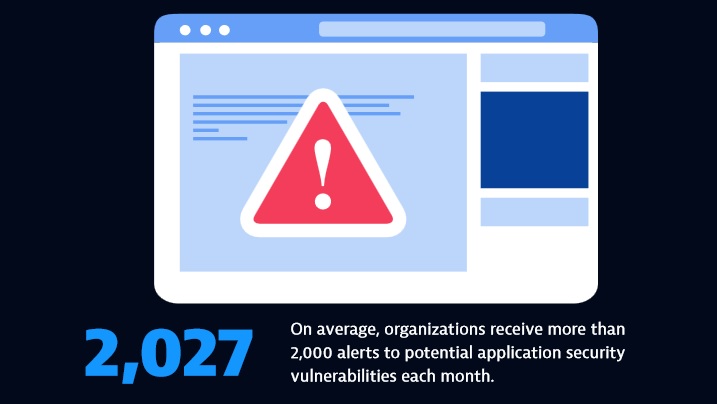Red Hat and Elastic announced an expanded collaboration to deliver next-generation search experiences supporting retrieval augmented generation (RAG) patterns using Elasticsearch as a preferred vector database solution integrated on Red Hat OpenShift AI.
The speed and complexity created by using multicloud environments, multiple coding languages, and open source software libraries are making vulnerability management more difficult, according to Observability and security must converge to enable effective vulnerability management, a new report from Dynatrace, based on an independent global survey of 1,300 chief information security officers (CISOs) in large-size organizations.
The reports says 75% of CISOs say that despite having a multi-layered security posture, persistent coverage gaps allow vulnerabilities into production. This highlights the growing need for observability and security to converge, paving the way toward AISecDevOps practices. This will empower organizations with a more effective way of managing vulnerabilities at runtime, and the ability to detect and block attacks in real time.
Findings from the research include:
■ 69% of CISOs say vulnerability management has become more difficult as the need to accelerate digital transformation has increased.
■ More than three-quarters (79%) of CISOs say that automatic, continuous runtime vulnerability management is key to filling the gap in the capabilities of existing security solutions. However, just 4% of organizations have real-time visibility into runtime vulnerabilities in containerized production environments.
■ Only 25% of security teams can access a fully accurate, continuously updated report of every application and code library running in production in real time.
"These findings underscore that there are always opportunities for vulnerabilities to slip past security teams, regardless of how robust their defenses might be. Both new applications and stable legacy software are prone to vulnerabilities that are more reliably detected in production. Log4Shell was the poster child for this problem, and there will undoubtedly be other scenarios like it in the future," said Bernd Greifeneder, CTO at Dynatrace. "It’s also clear that most organizations still lack real-time visibility into runtime vulnerabilities. The problem stems from the growing use of cloud-native delivery practices, which enable greater business agility, but also introduce new complexity for vulnerability management, attack detection, and blocking. The rapid pace of digital transformation means that already overstretched teams are bombarded by thousands of security alerts that make it impossible to see through the noise and focus on what matters. Teams find it impossible to respond manually to every alert, and organizations are exposed to unnecessary risk by allowing vulnerabilities to escape into production."

Additional findings include:
■ On average, organizations receive 2,027 alerts of potential application security vulnerabilities each month.
■ Less than a third (32%) of the application security vulnerability alerts organizations receive each day require action, compared to 42% last year.
■ On average, application security teams waste 28% of their time on vulnerability management tasks that could be automated.
"Organizations realize that to manage vulnerabilities in the cloud-native era effectively, security must become a shared responsibility. The convergence of observability and security is critical to providing development, operations, and security teams with the context needed to understand how their applications are connected, where the vulnerabilities lie, and which need to be prioritized. This accelerates risk management and incident response," continued Greifeneder. "To be truly effective, organizations should look for solutions that have AI and automation capabilities at their core, enabling AISecDevOps. These solutions empower their teams to quickly identify and prioritize vulnerabilities at runtime, block attacks in real time, and remediate software flaws before they can be exploited. This means teams can stop wasting time in war rooms or chasing false positives and potential vulnerabilities that will never make it into production. Instead, they confidently deliver better, more secure software faster."
Methodology: The report is based on a global survey of 1,300 CISOs in large-size organizations with more than 1,000 employees, conducted by Coleman Parkes and commissioned by Dynatrace in April 2022. The sample included 200 respondents in the U.S., 100 each in the UK, France, Germany, Spain, Italy, the Nordics, the Middle East, Australia, and India, and 50 each in Singapore, Malaysia, Brazil, and Mexico.
Industry News
Traceable AI announced an Early Access Program for its new Generative AI API Security capabilities.
StackHawk announced a new integration with Microsoft Defender for Cloud to help organizations build software more securely.
MacStadium announced that it has obtained Cloud Security Alliance (CSA) Security, Trust & Assurance Registry (STAR) Level 1, meaning that MacStadium has publicly documented its compliance with CSA’s Cloud Controls Matrix (CCM), and that it joined the Cloud Security Alliance (CSA), the world’s leading organization dedicated to defining and raising awareness of best practices to help ensure a secure cloud computing environment.
The Cloud Native Computing Foundation® (CNCF®) released the two-day schedule for CloudNativeSecurityCon North America 2024 happening in Seattle, Washington from June 26-27, 2024.
Sumo Logic announced new AI and security analytics capabilities that allow security and development teams to align around a single source of truth and collect and act on data insights more quickly.
Red Hat is announcing an optional additional 12-month EUS term for OpenShift 4.14 and subsequent even-numbered Red Hat OpenShift releases in the 4.x series.
HAProxy Technologies announced the launch of HAProxy Enterprise 2.9.
ArmorCode announced the general availability of AI Correlation in the ArmorCode ASPM Platform.
Octopus Deploy launched new features to help simplify Kubernetes CD at scale for enterprises.
Cequence announced multiple ML-powered advancements to its Unified API Protection (UAP) platform.
Oracle announced plans for Oracle Code Assist, an AI code companion, to help developers boost velocity and enhance code consistency.
New Relic launched Secure Developer Alliance.
Dynatrace is enhancing its platform with new Kubernetes Security Posture Management (KSPM) capabilities for observability-driven security, configuration, and compliance monitoring.
Red Hat announced advances in Red Hat OpenShift AI, an open hybrid artificial intelligence (AI) and machine learning (ML) platform built on Red Hat OpenShift that enables enterprises to create and deliver AI-enabled applications at scale across hybrid clouds.




